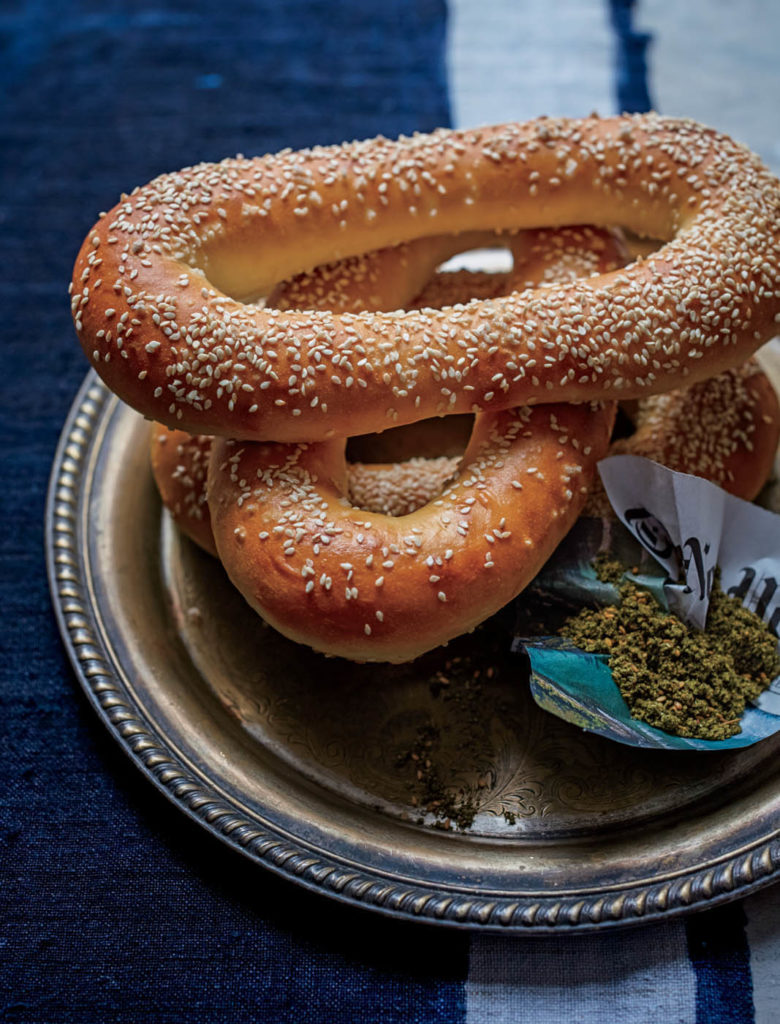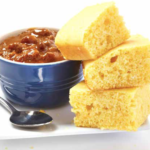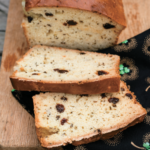Excerpted from Breaking Breads by Uri Scheft.
To be clear, the Jerusalem bagel has nothing to do with the American bagel. The only connection between the American bagel and the Jerusalem bagel is the hole they have in the middle. A Jerusalem bagel is a very airy, light, large oval-shaped ring; it’s also sometimes called ka’ak (in Turkey, it’s known as simit). There is also a Polish version that has a larger hole and a twisted ring. The dough is quite sweet, which is nice against the warm and toasty flavor of the sesame seeds and salt that coat the outside of the ring.
In Jerusalem, these bagels are sold with a little bit of za’atar and wrapped in a small square of newspaper. If you can wait until you get home, you rip off a piece of the bagel and dip it into a small dish of olive oil and then dunk it into the za’atar—wow, it is so good! I don’t think there is one vendor in all of East Jerusalem who sells the bread ring without za’atar. This is a bread that must be eaten fresh—it dries out quickly and once it does, it isn’t nearly as delicious. Many of the best vendors sell the fresh-from-the-oven rings throughout the day. The good news is that Jerusalem bagels freeze beautifully and defrost quickly— a brief warm-up in a hot oven brings them right back to life.

Jerusalem Bagel
For the Dough
- Cool room-temperature water, 280 grams (1 cup plus 3 tablespoons)
- Fresh yeast, 25 grams (3 tablespoons)
- or active dry yeast, 8 grams (2¼ teaspoons)
- All-purpose flour (sifted, 11.7% protein), 500 grams (4 cups), plus extra for kneading and shaping
- Dry milk powder, 60 grams (2½ teaspoons)
- Granulated sugar, 50 grams (¼ cup)
- Fine salt, 15 grams (1 tablespoon)
- Extra-virgin olive oil, 20 grams (1 tablespoon plus 1 teaspoon)
For the Egg Wash and Topping
- Large egg, 1
- Water, 1 tablespoon
- Fine salt, Pinch
- Sesame seeds, 60 grams (6 tablespoons)
- Coarse salt, for sprinkling
Instructions
- Make the dough: Pour the water into the bowl of a stand mixer, add the yeast, and whisk briefly to combine. Add the flour, milk powder, sugar, and salt. Attach the dough hook and mix on low speed until the flour is about halfway incorporated, about 30 seconds. With the mixer running, slowly drizzle in the olive oil, and once the dough comes together, increase the speed to medium and knead the dough until it looks smooth, 3 minutes.
- Stretch and fold the dough, then let it rise: Use a plastic dough scraper to transfer the dough to a lightly floured work surface. Take one corner of the dough and stretch the dough until it tears, then fold it on top of the center. Give the dough a quarter turn and repeat until it has been stretched and folded about 12 times and is shaped into a nice round ball. Lightly flour a large bowl, set the dough in the bowl, and lightly flour the top. Cover the bowl with plastic wrap and set it aside in a draft-free spot at room temperature until the dough has nearly doubled in volume, about 30 minutes.
- Divide and round the dough, then let it proof: Remove the dough from the bowl and set it on a lightly floured surface. Divide it into 6 equal pieces. Fold the corners of one piece up onto the center, then flip the piece over and using a cupped hand, push and pull the dough in a circular motion on the work surface to create a round ball. Repeat with each piece. Cover with a clean kitchen towel or plastic wrap, and leave at room temperature for 30 minutes.
- Shape the dough: Pick up a piece of dough and stick a finger into the center to create a hole (like a doughnut). Gently use 2 fingers to make the hole larger until the dough is the size of a large doughnut. Set the shaped dough on a parchment paper–lined sheet pan and repeat with the other pieces. Cover the shaped pieces of dough with a kitchen towel or plastic wrap and let them rest at room temperature for a few minutes. Then repeat, stretching the hole to be a little bit bigger (being careful not to deflate the dough), cover, and set the dough aside to rest for another 10 minutes.
- Adjust one oven rack to the upper-middle position and one to the lower-middle position. Preheat the oven to 350°F. Line 2 sheet pans with parchment paper.
- Bake the dough: Stretch each shaped piece of dough to make a 12-inch-long oval ring. Set 3 rings on each prepared sheet pan. Make the egg wash by whisking the egg, water, and salt together in a small bowl.Brush the top of each ring with egg wash (see Note), and then sprinkle heavily with sesame seeds and coarse salt. Place a sheet pan on each of the oven racks and bake for 8 minutes; then rotate the bottom sheet to the top and the top to the bottom, turning the sheets as well. Continue baking until the bagels are golden brown, 4 to 6 minutes longer. Remove from the oven and cool on the sheet pans. Jerusalem bagels are best eaten within a few hours of baking.
Note: Always brush egg wash over dough from two different directions so you don’t get any drips. I like to brush all of the loaf or rolls in one direction, then turn the sheet pan around to brush from the opposite direction.




No Comments